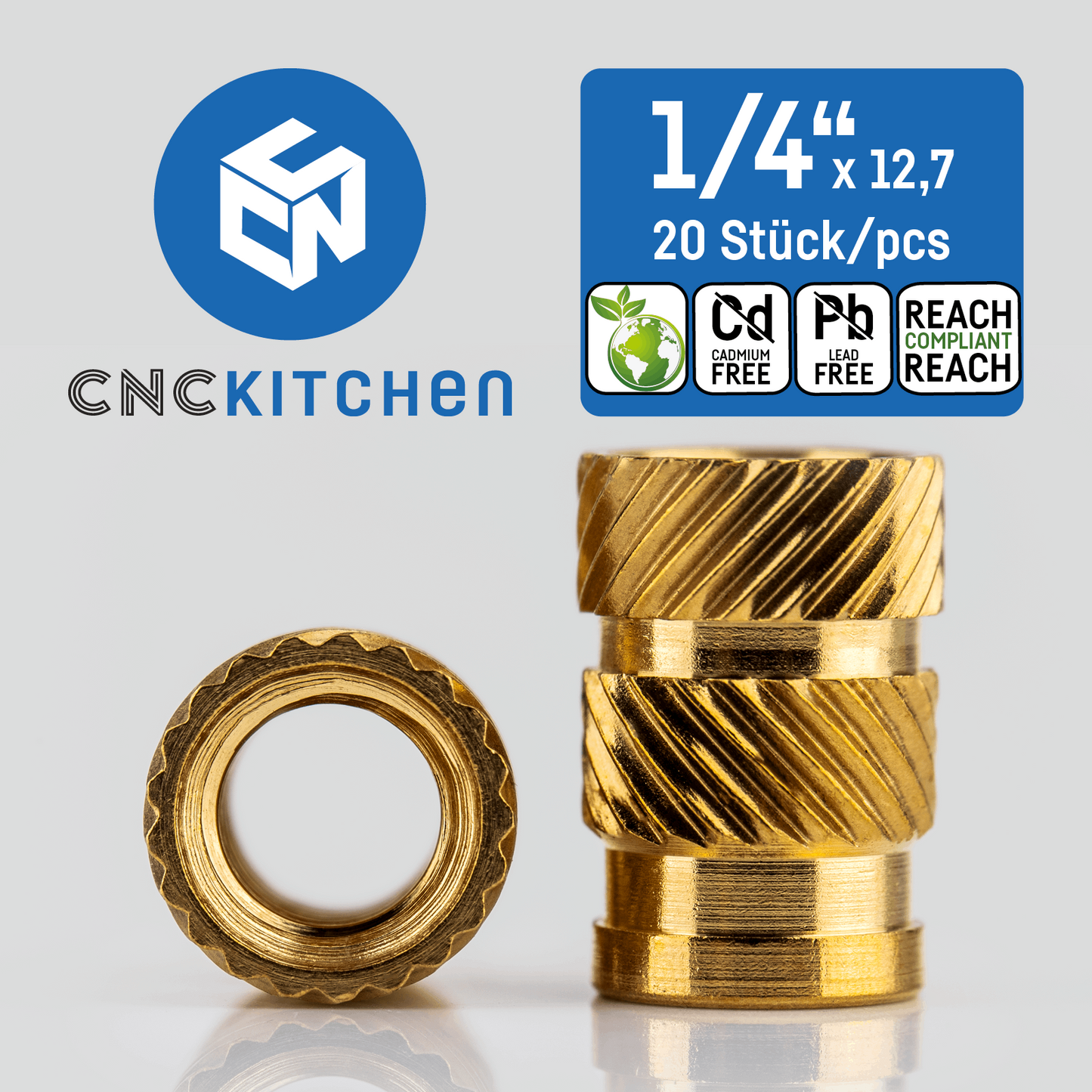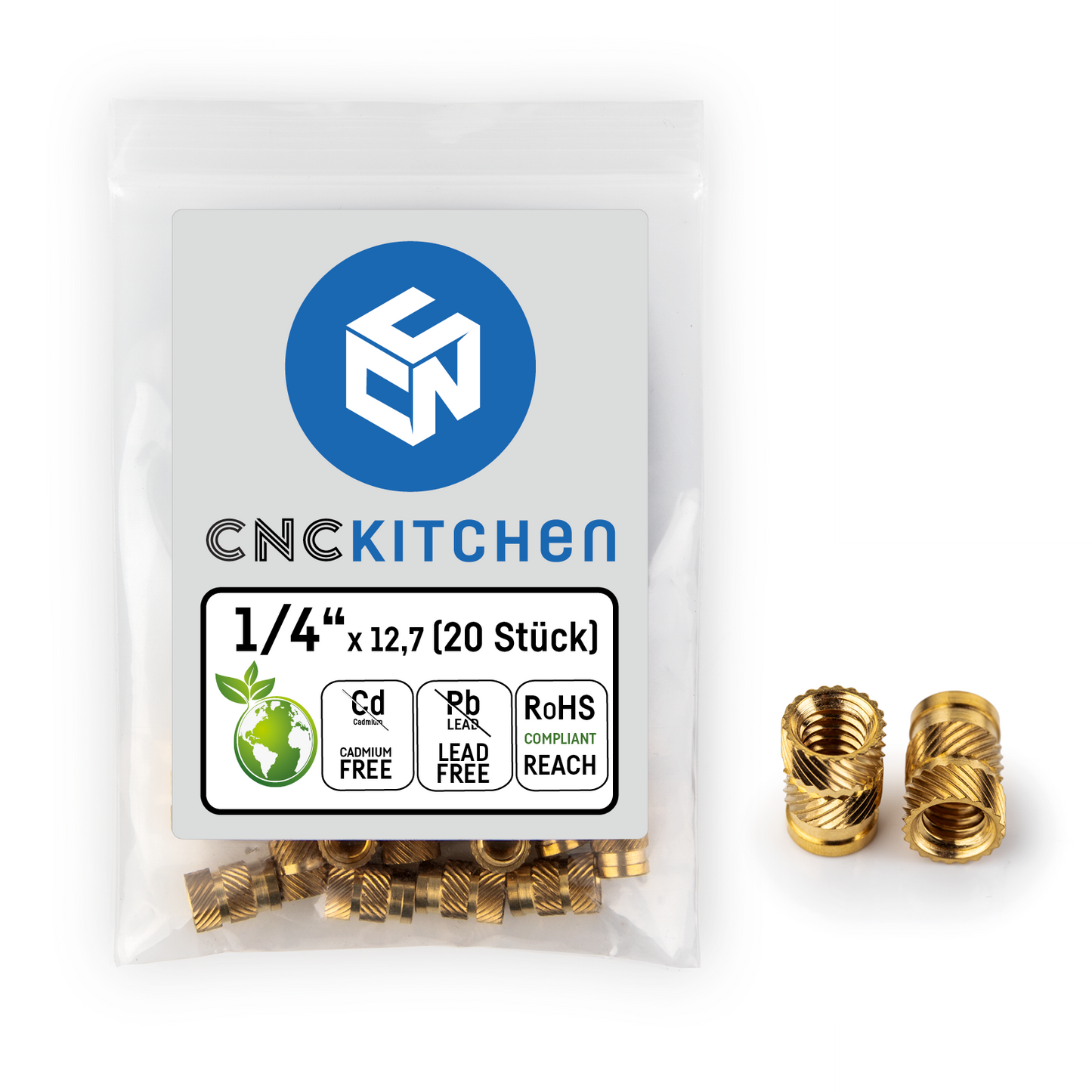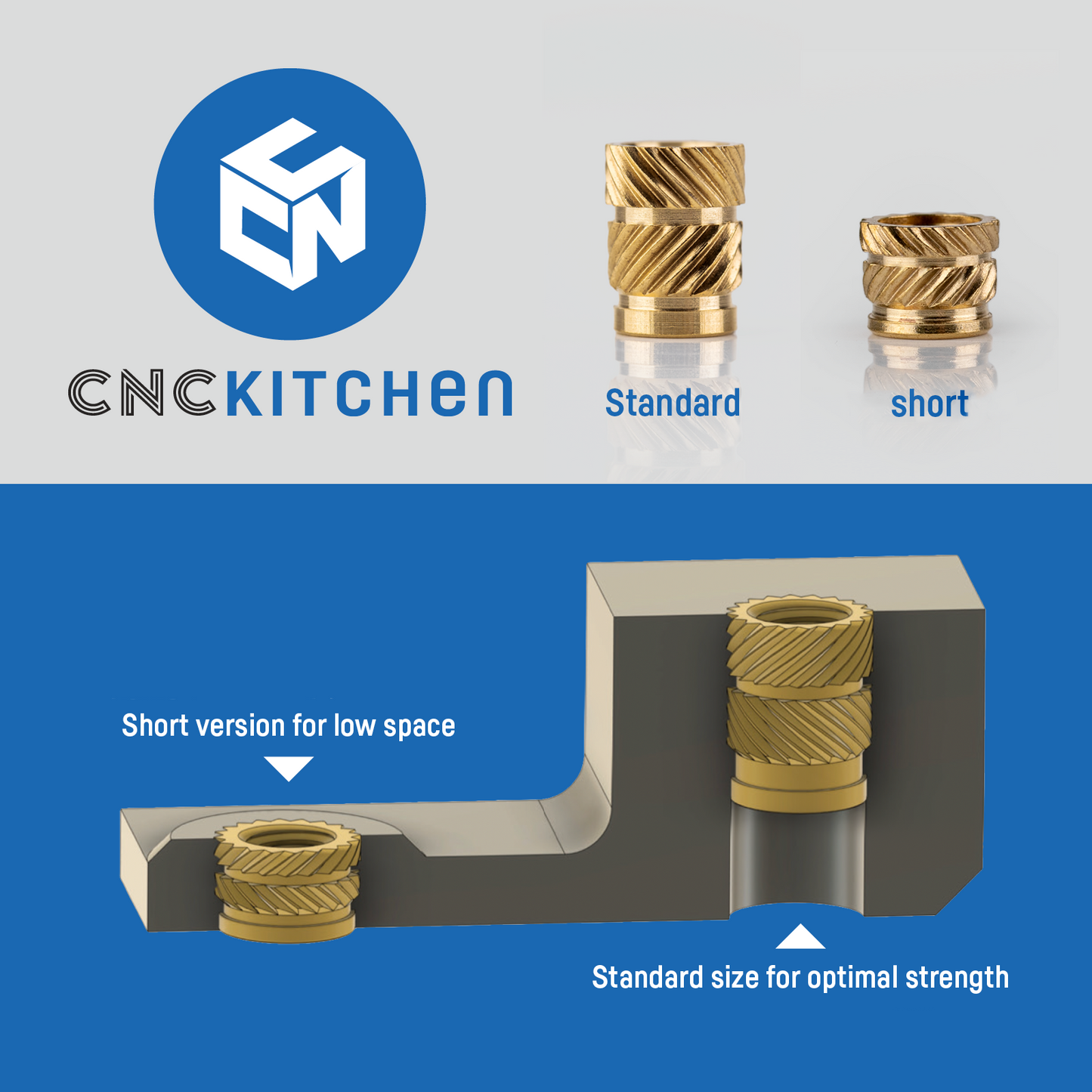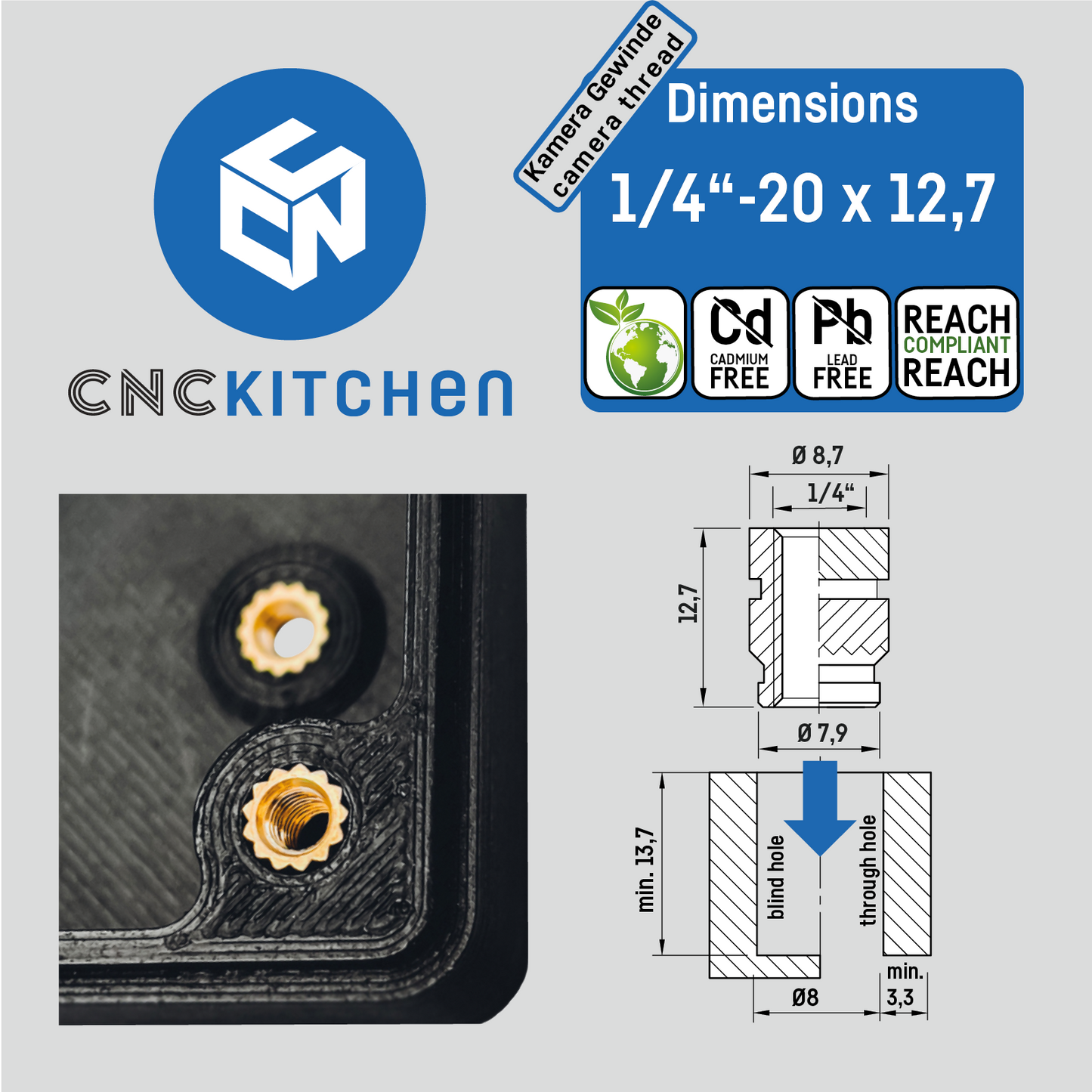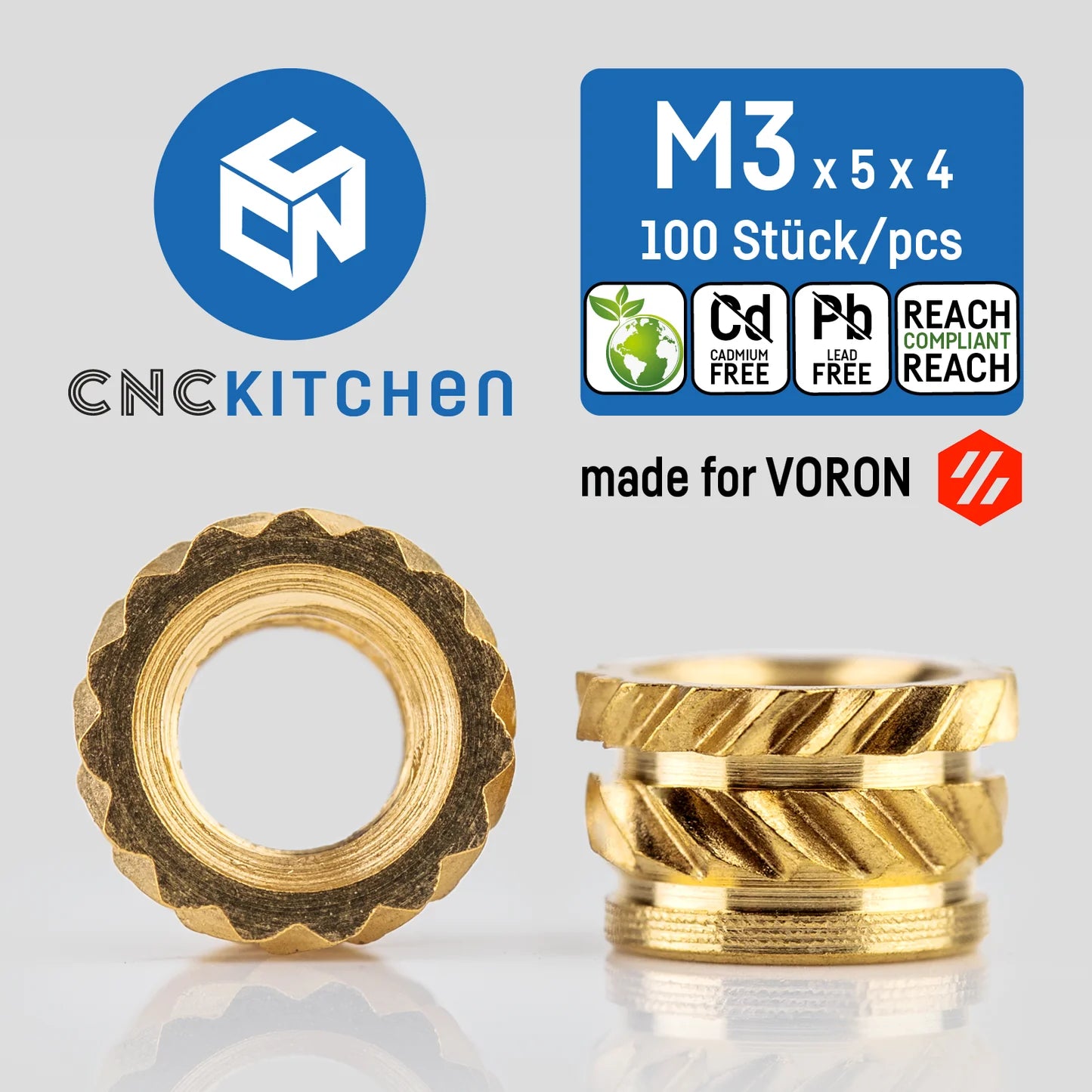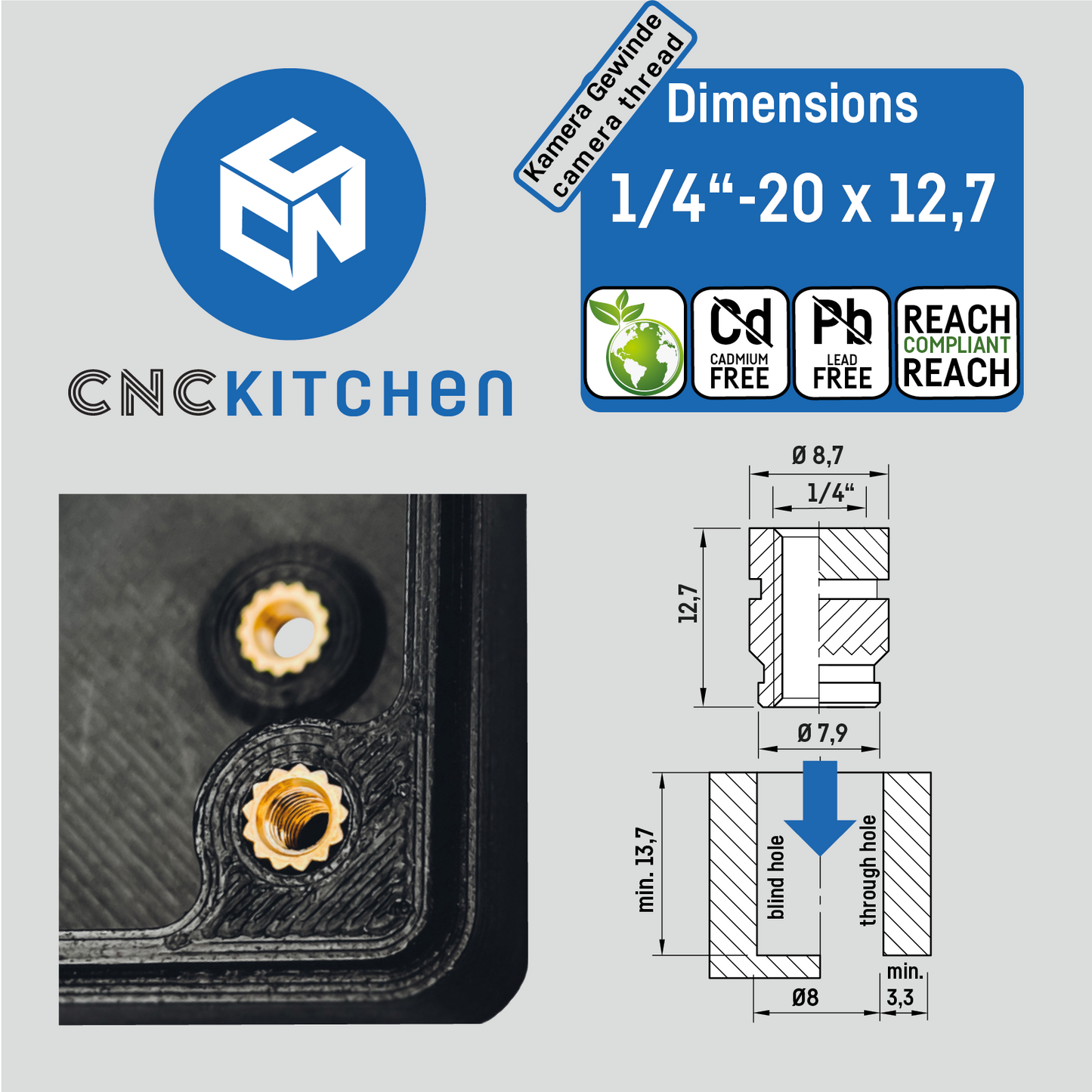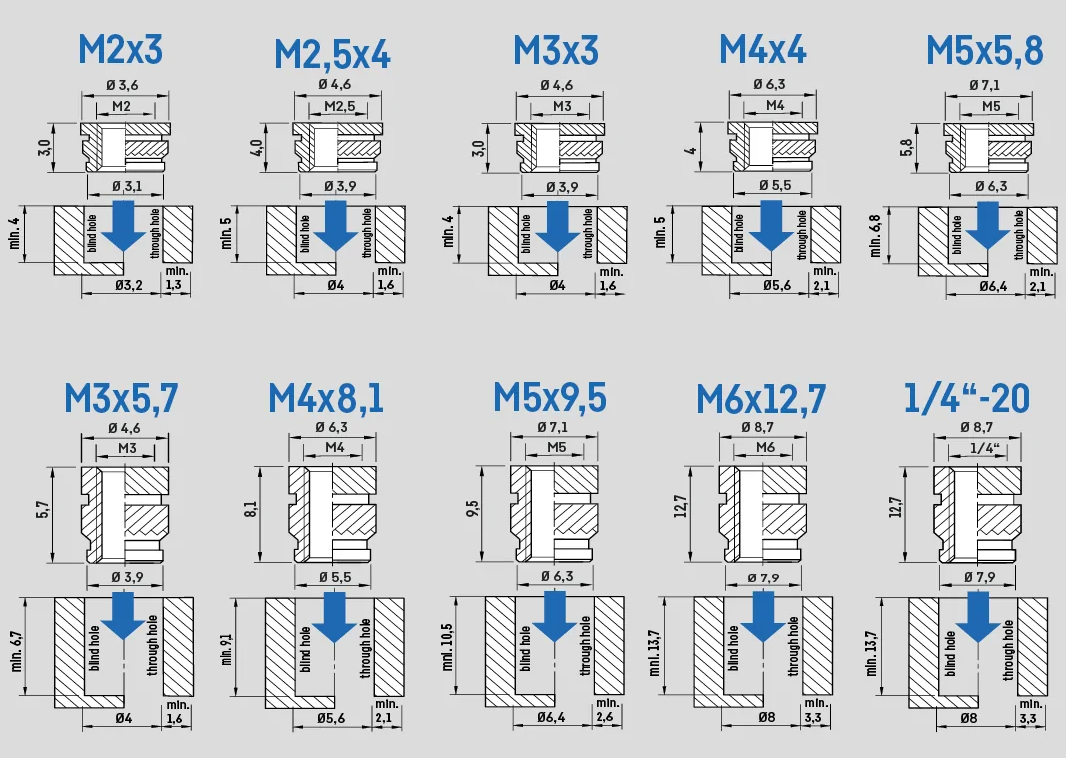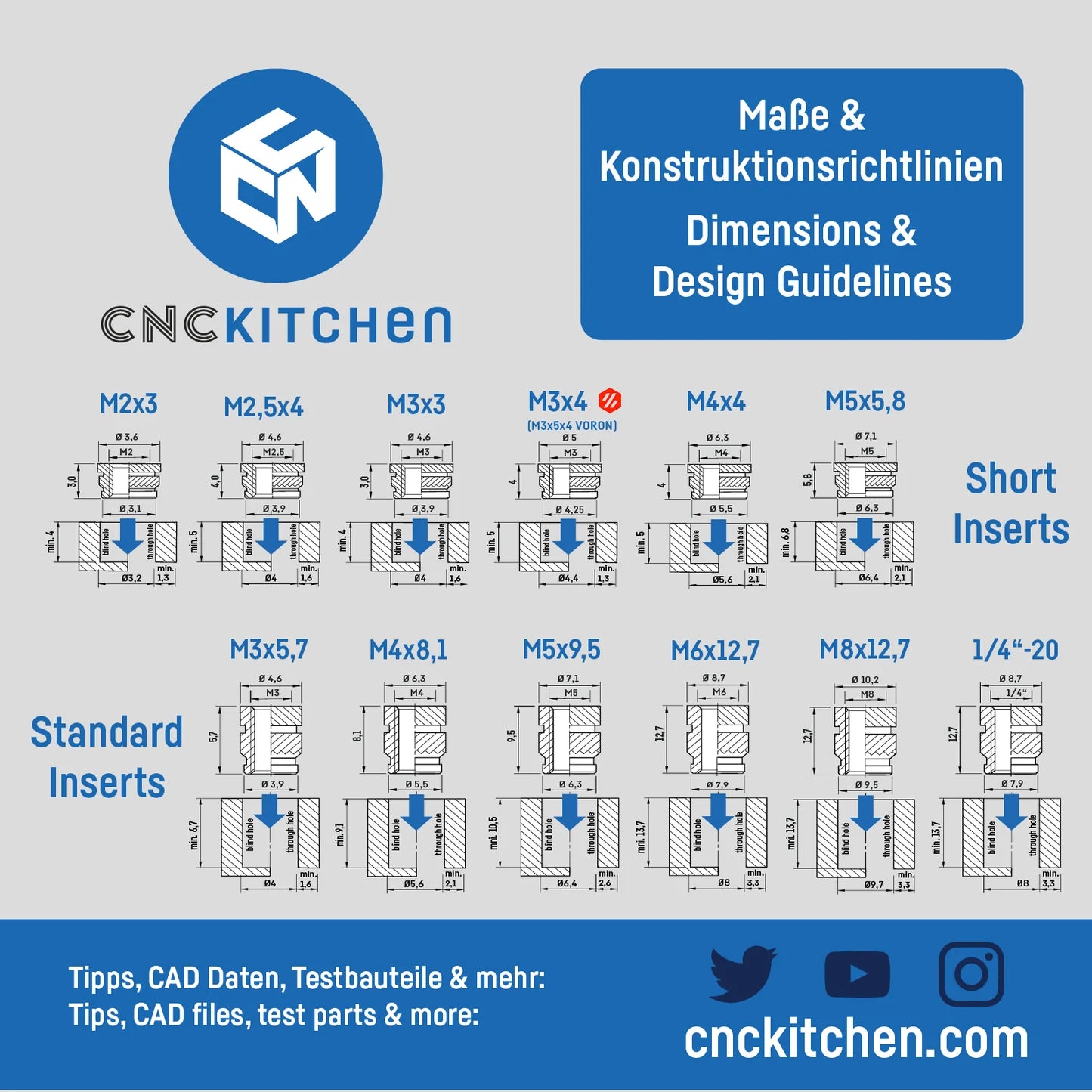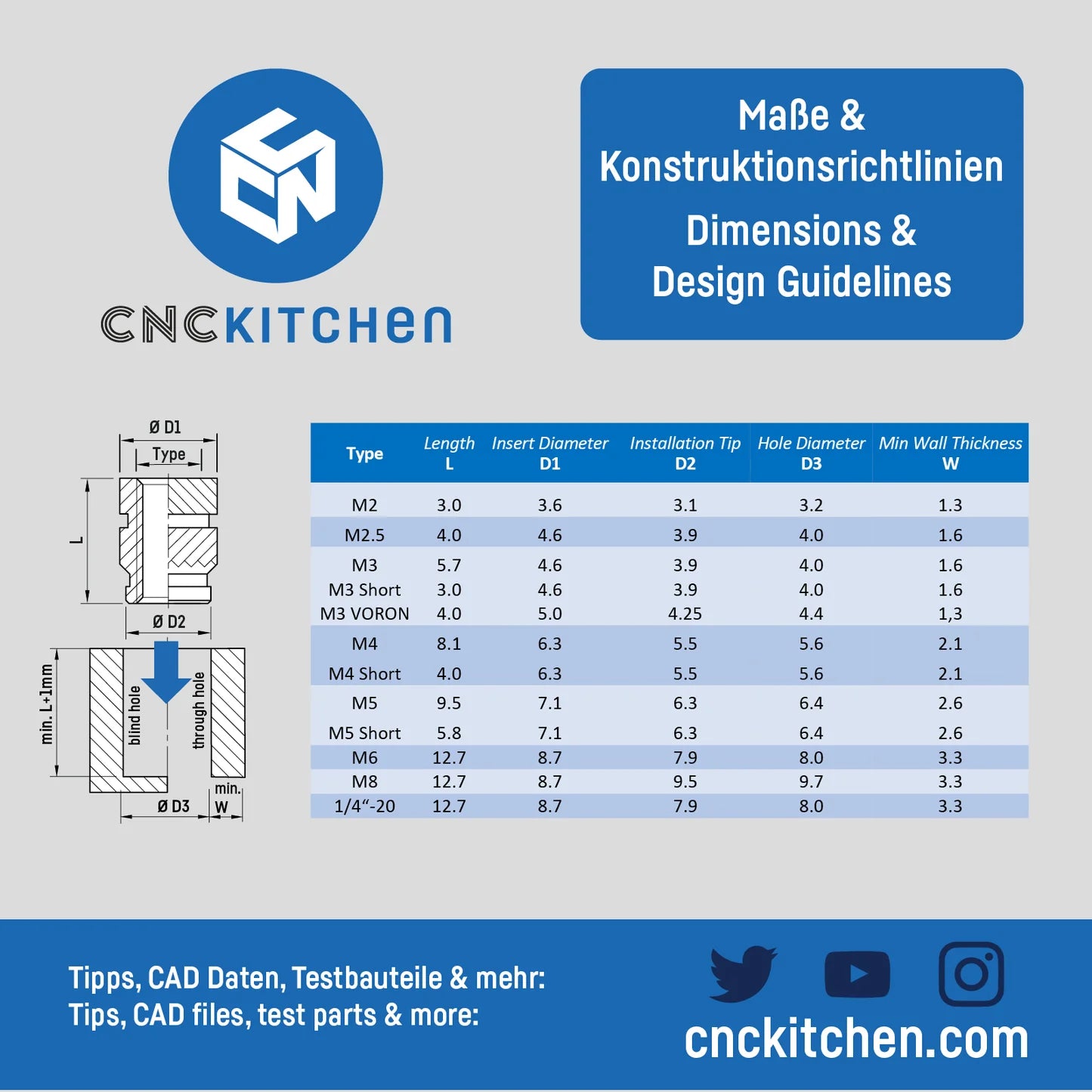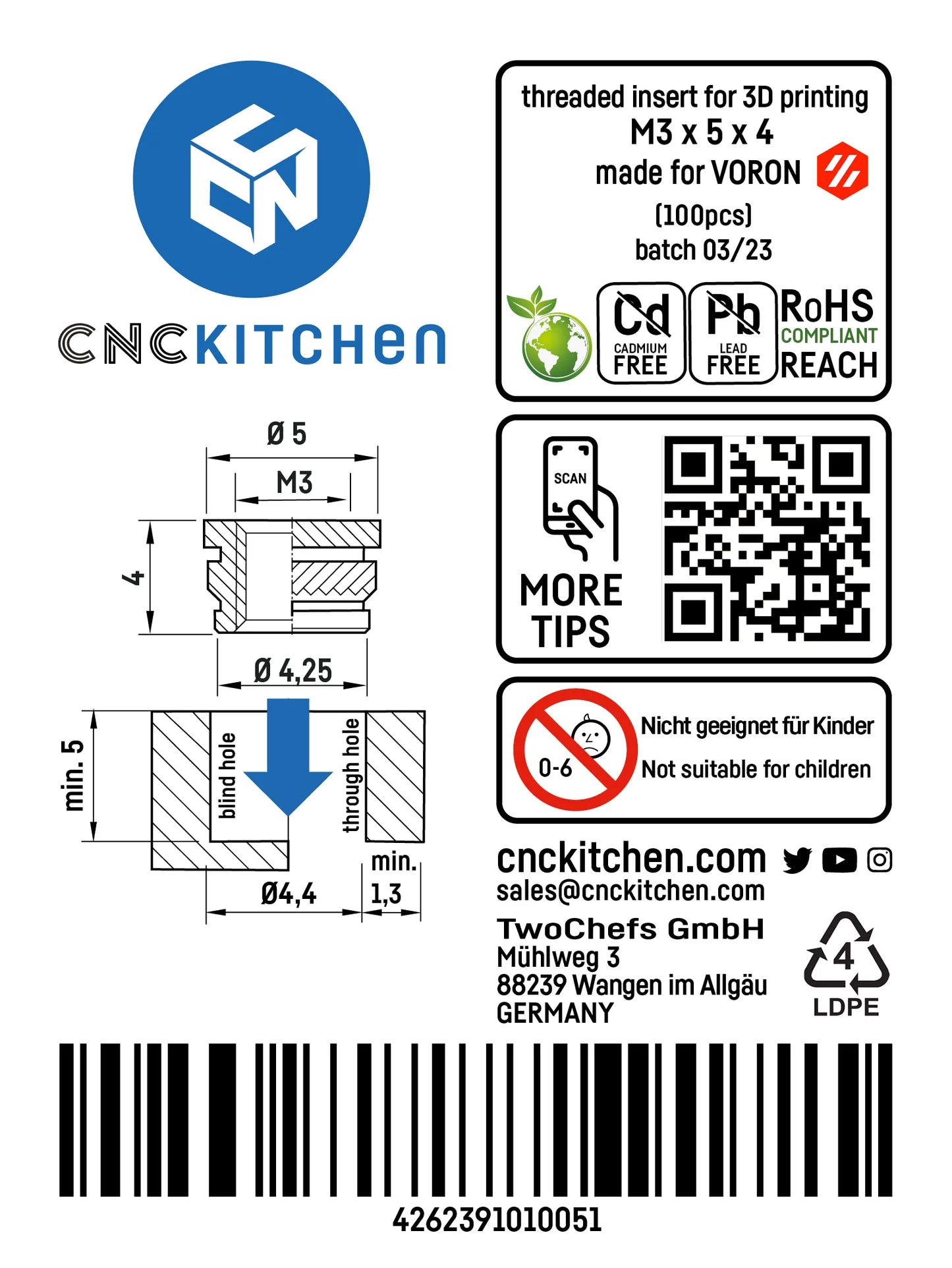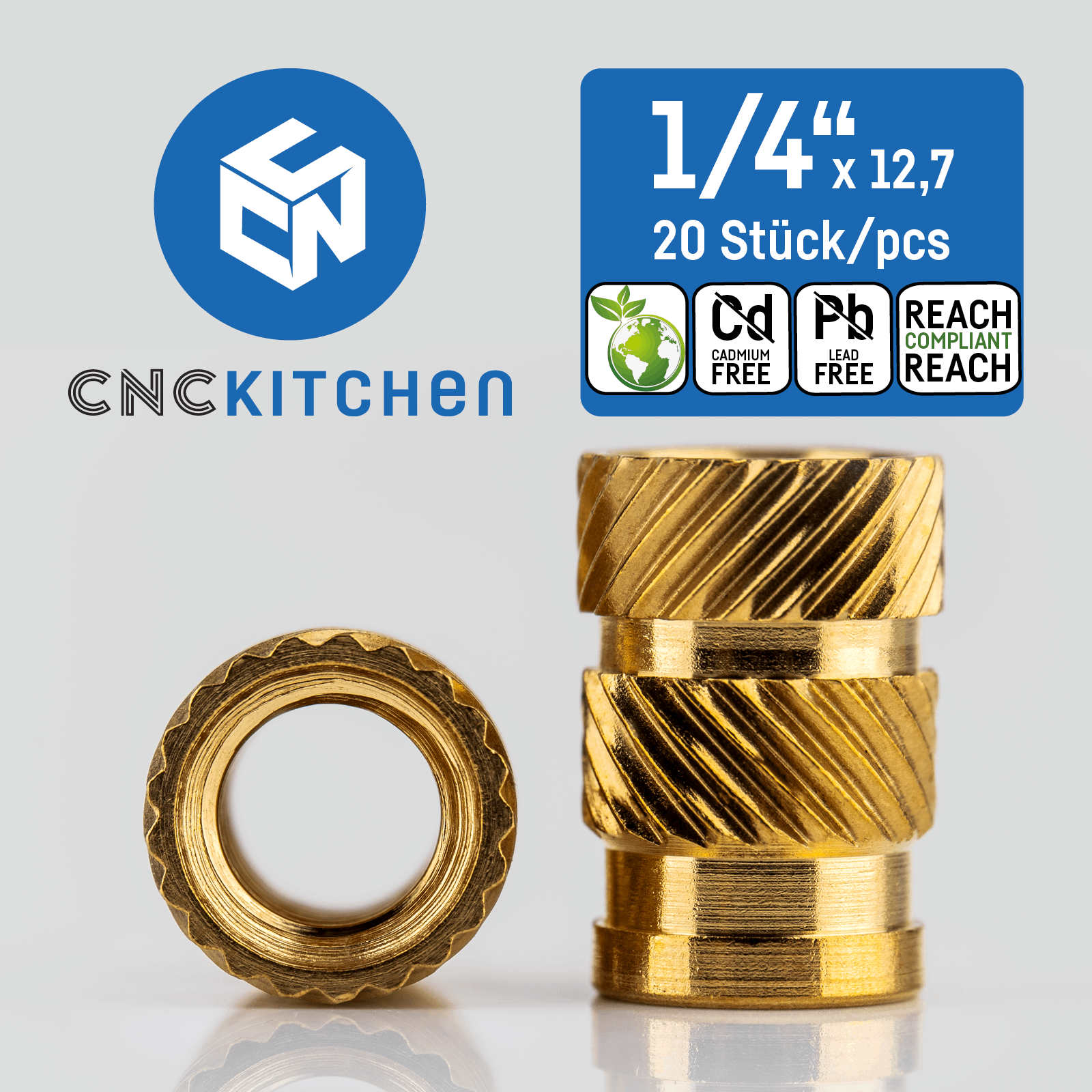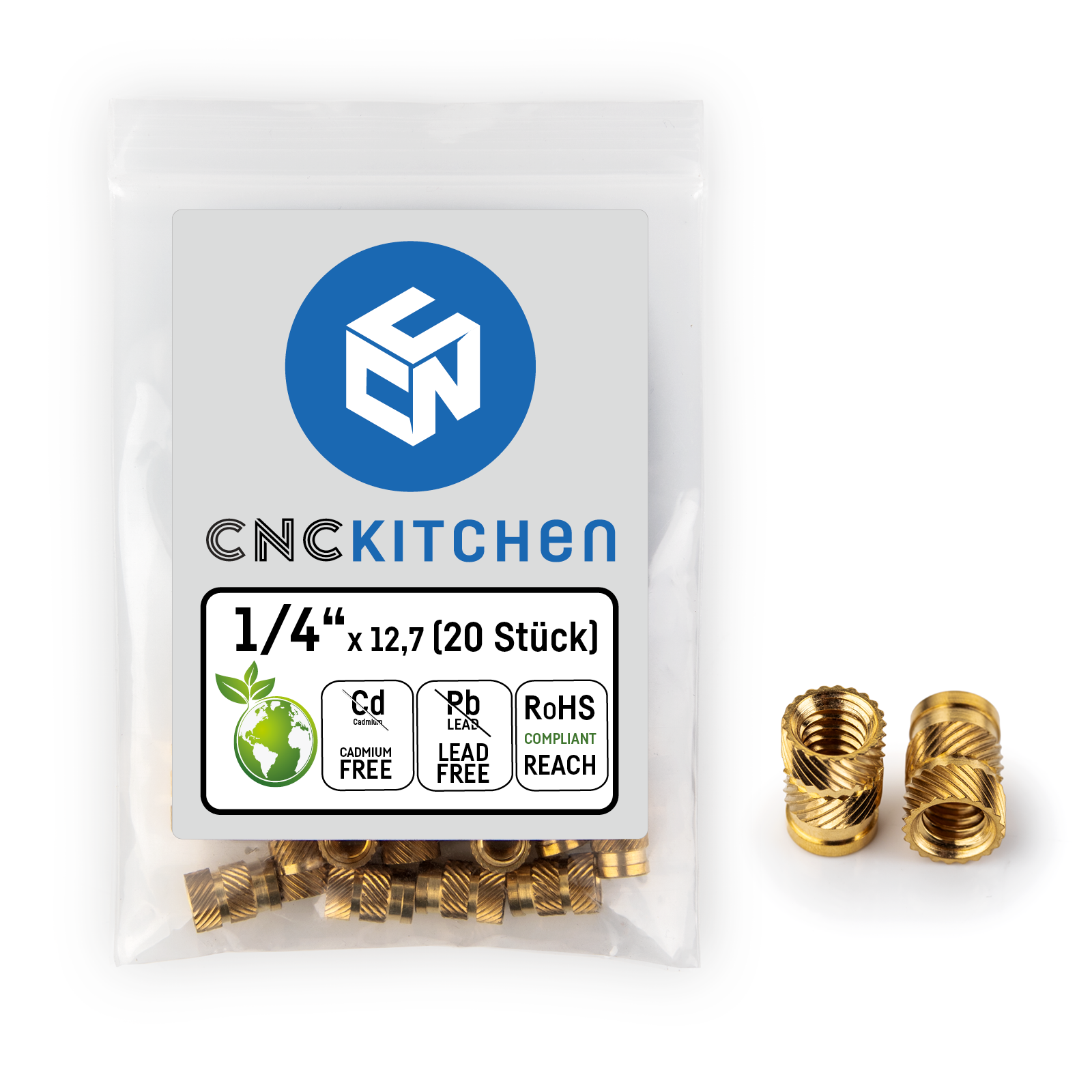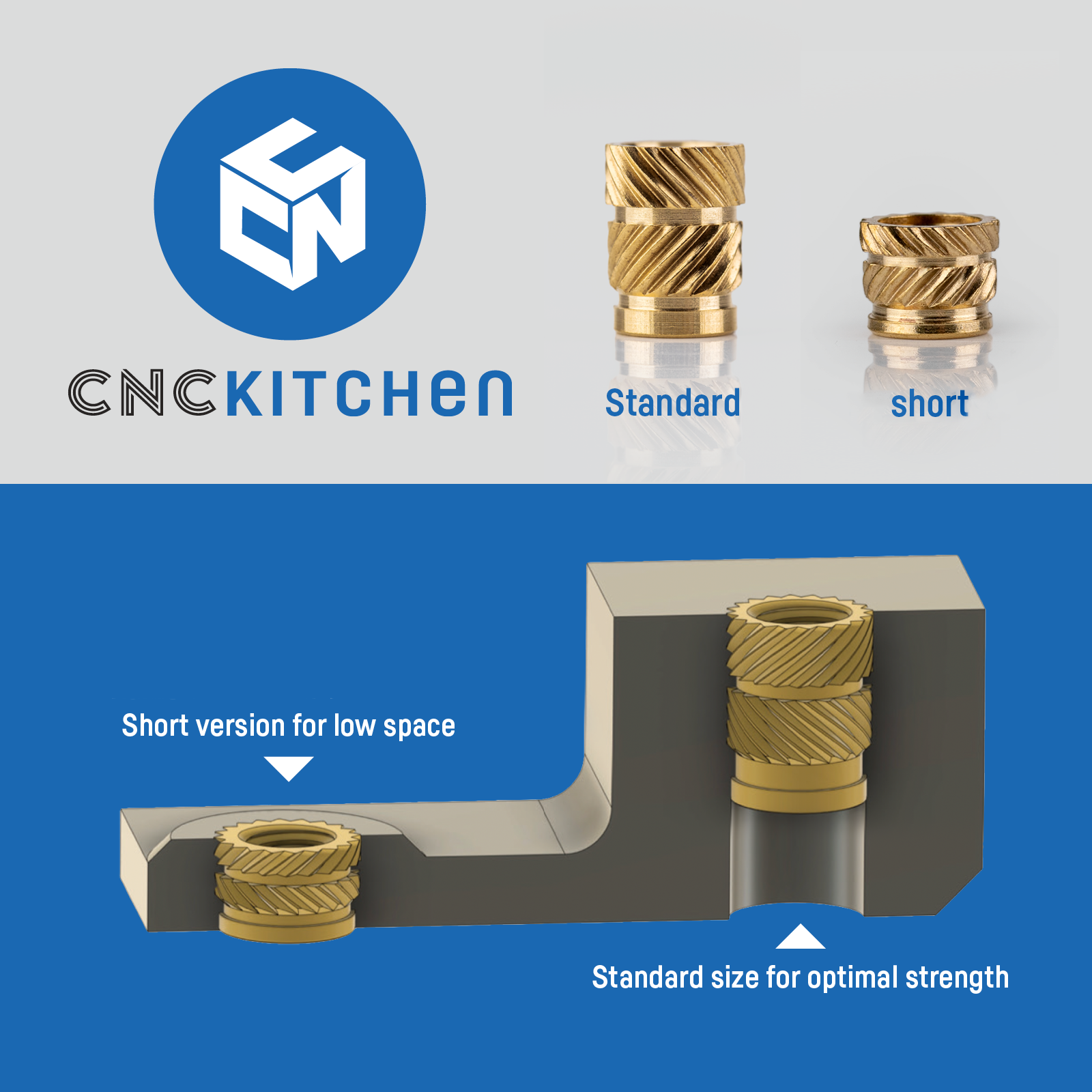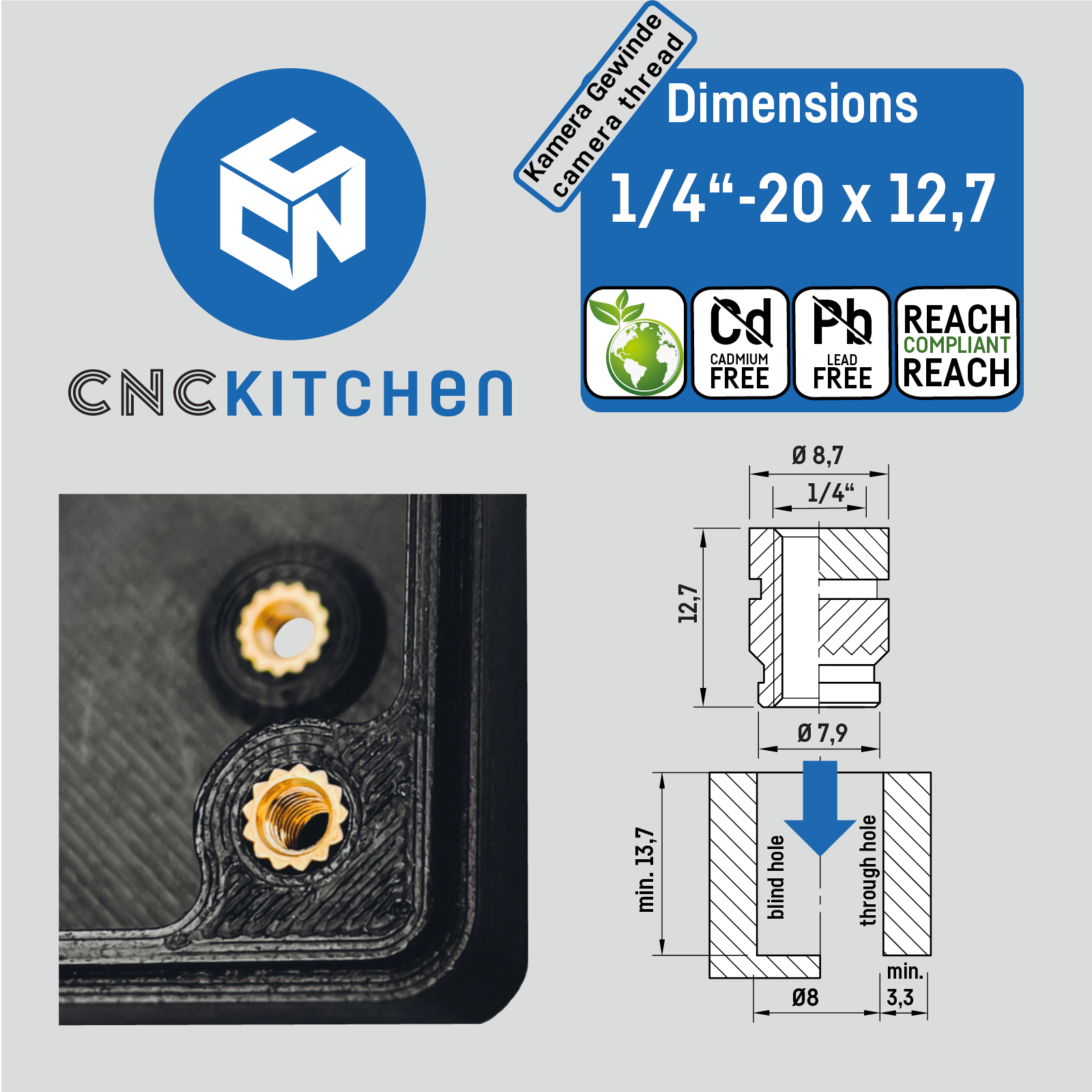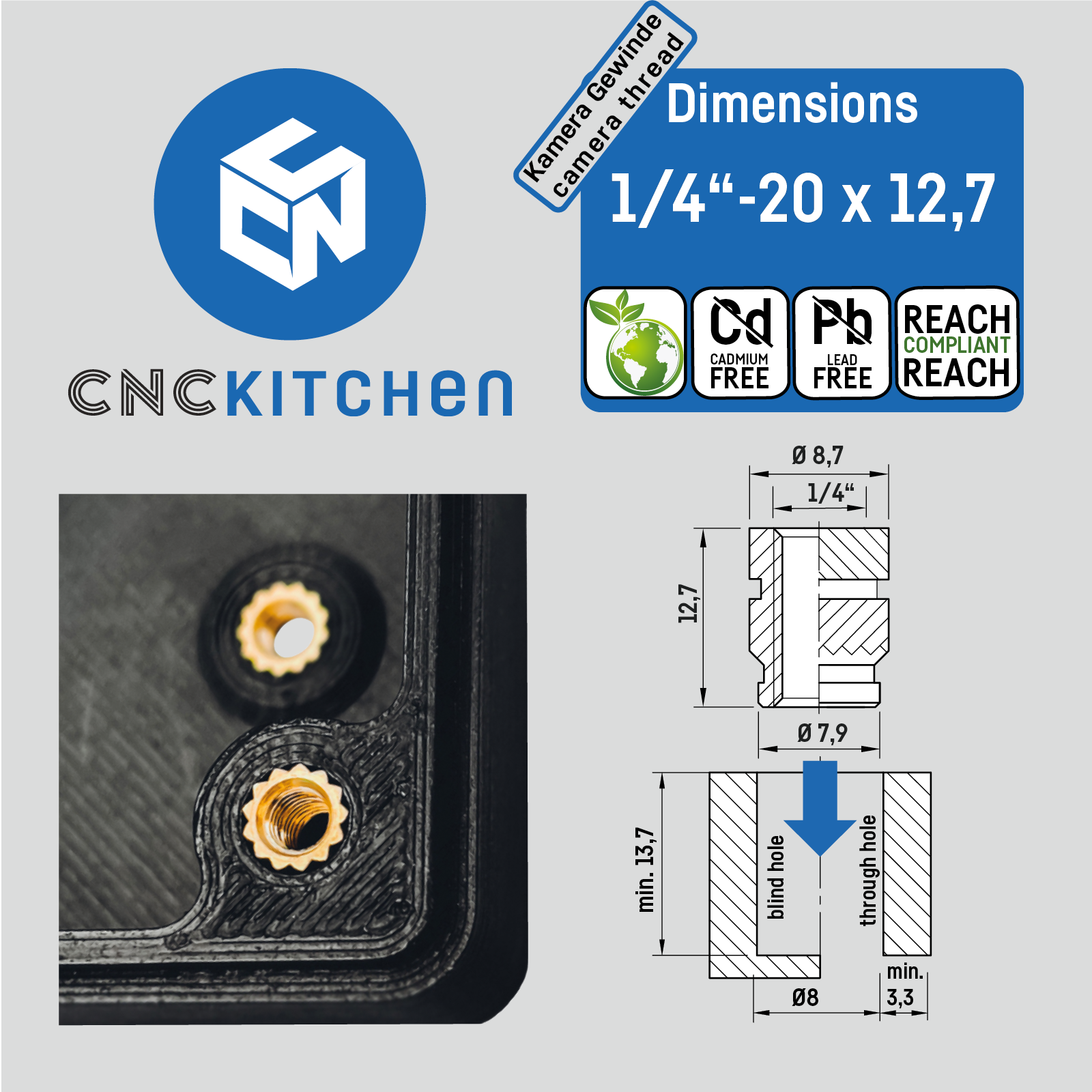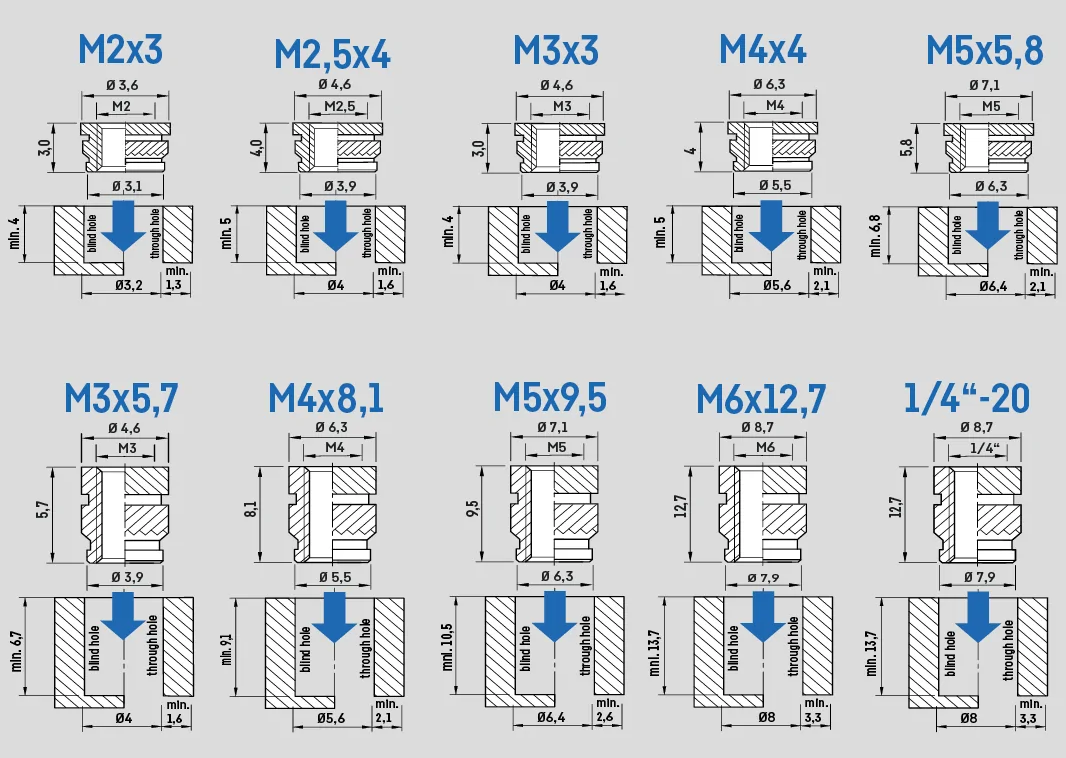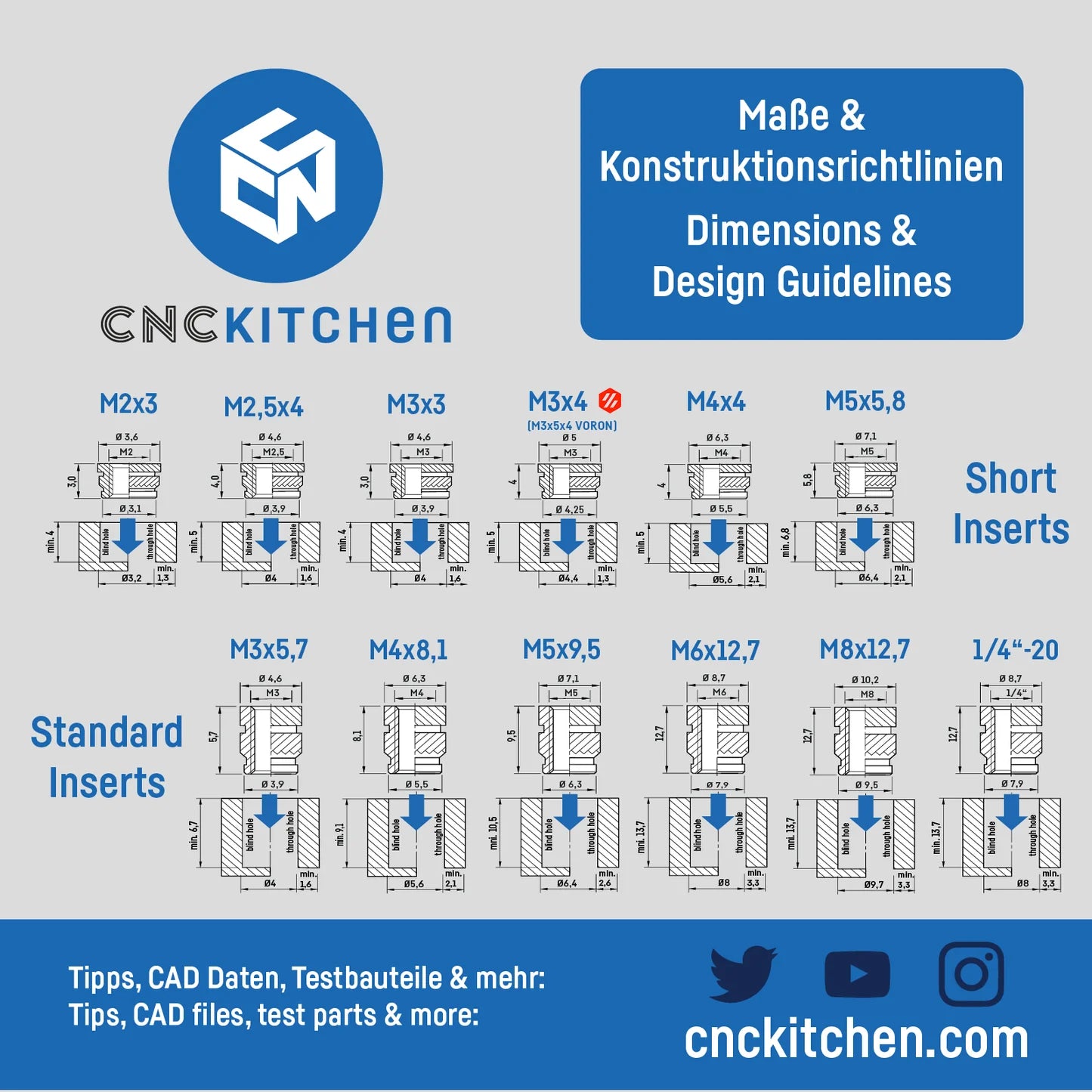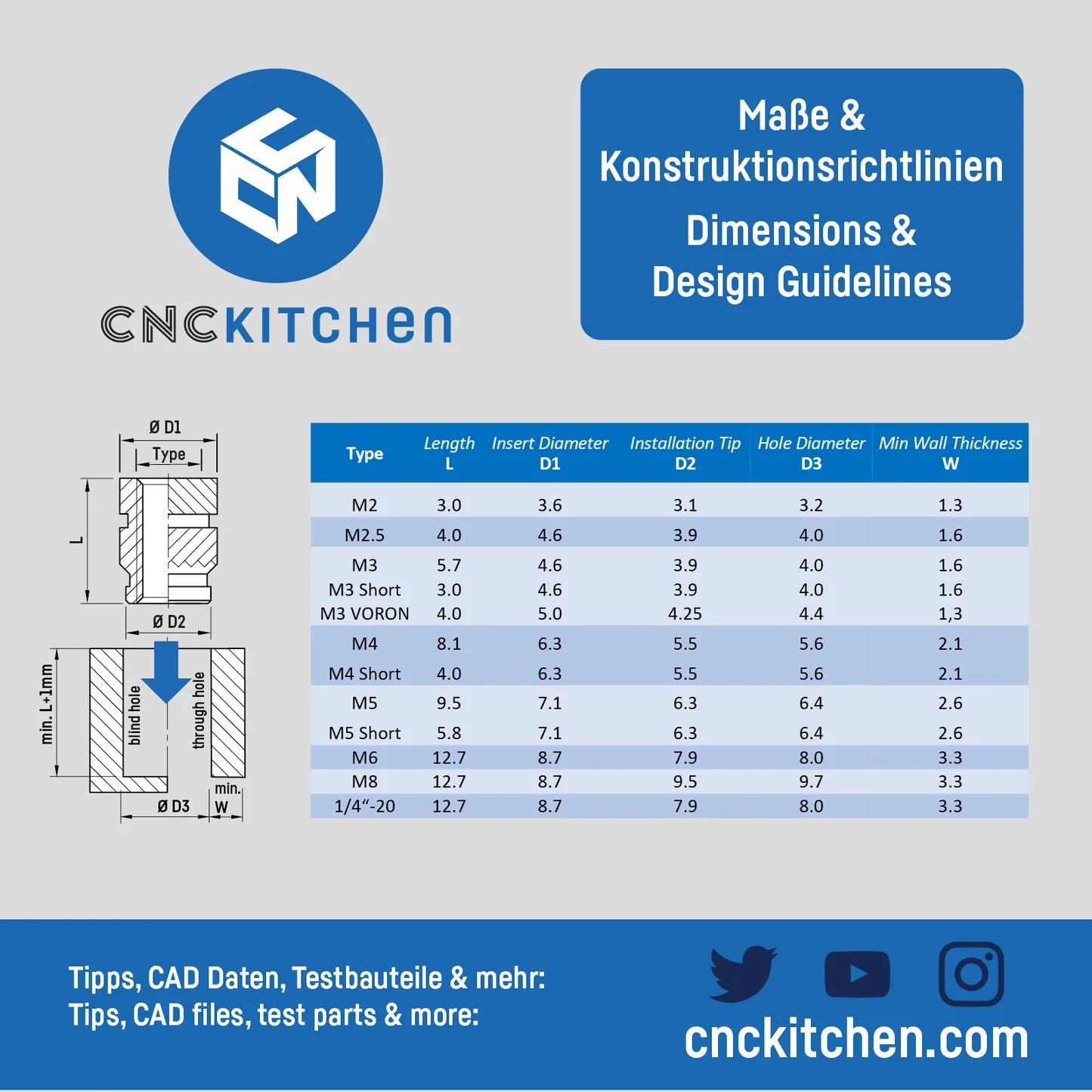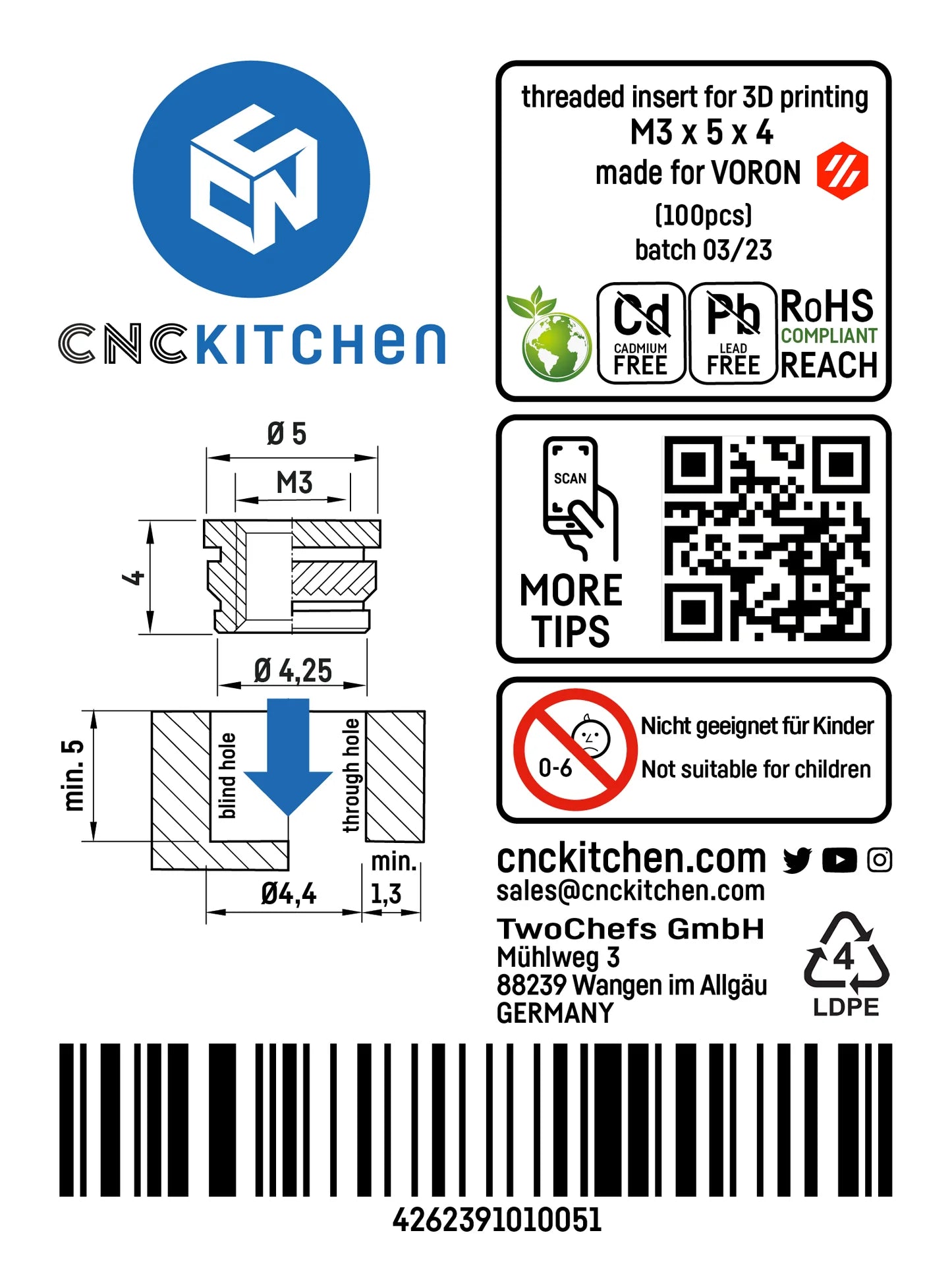CNC Kitchen
CNC Kitchen Official Threaded Inserts
CNC Kitchen Official Threaded Inserts
Couldn't load pickup availability
Heat-set threaded inserts created from brass provide a durable wear-resistant thread to a 3D printed part.
LOOKING FOR CNC KITCHEN OFFICIAL SOLDERING TIPS? GET THEM HERE!
LOOKING FOR GOOD HEAT SET PRESS OPTIONS? Take a look at the following offerings from our fellow makers:
- Naomi Wu's Nukit Heat Set Insert Press comes fully assembled and ready to press without having to modify your soldering station setup.
- Adam at Vector 3D sells his VLMP heat insert press kit HERE at a great value!
Threaded inserts by CNC Kitchen, community creator and youtuber.
Threaded inserts not only look great in 3D printed parts, but they also have a practical use. Everyone has had a device that was assembled with screws. After disassembling and reassembling it a few times, you realize that if the screws dug directly into the plastic, they won't hold anymore. Each time you screw the parts together, the material gets plastically deformed at the threads, which eventually leaves you with nothing but a ragged hole where nothing can grab. This is where thread inserts come into play. By melting them into your parts, they are positively bonded to the plastic and no longer move. The screws are now turned into durable and also low-friction brass and thus will last forever.
- PROTECT OUR ENVIRONMENT, 100% LEAD and CADMIUM FREE Brass alloy
- ORIGINAL CNC Kitchen threaded inserts for 3D printed parts (PLA, PETG, ABS, etc.),
- HIGHEST QUALITY, make your printed parts to professional products
- PRECISE CNC machined inserts made from high-quality Lead and Cadmium free alloy
- EASY INSTALLATION with a soldering iron. Installation temperature is the printing temperature +10 °C
Installation
You can install heat-set inserts by pushing them into the plastic with a soldering iron. The printed plastic will melt and reflow around the knurled external surface. This creates a secure bond between the insert and the plastic and ensures a strong pull-out resistance and torque-out rating. When preheating your soldering iron, use the print temperature for the specific filament that was used to print the plastic part increased by 10°C - 20°C.
Share
